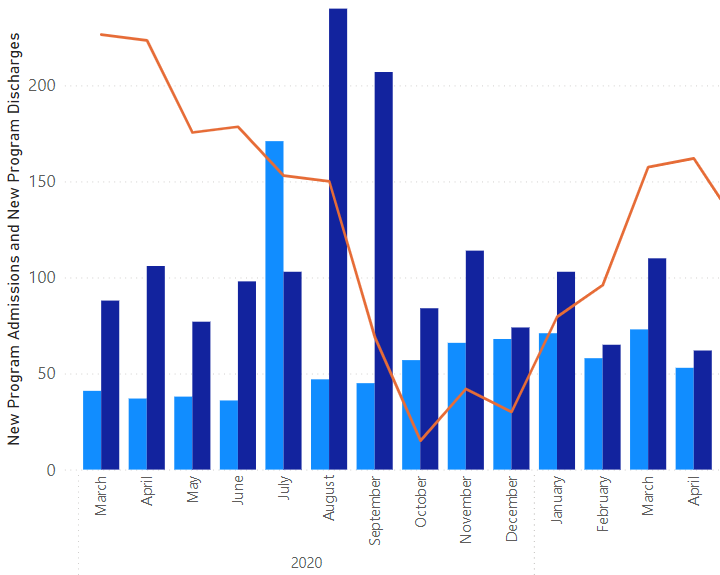
Anyone working in the trenches of behavioral health knows that data isn’t just a strategic priority. It’s a practical mess. The promise of data-informed care sounds good in theory, but once you sit down to actually build it, open the systems and try to line up the numbers with the needs, it becomes something else entirely. Complicated. Fragmented. Frustrating. And deeply necessary.
For program managers, IT leads, and clinical operations directors, the task isn’t to argue whether data should guide decisions. That ship has sailed. The question now is how to take what’s already inside the systems and turn it into something that actually helps. Because until that happens, clinicians keep guessing, directors keep hoping, and agencies keep missing out on the kind of visibility that drives real change.
Check out our Deep Dive on this topic.
Behind the Curtain of Behavioral Health Data
The problem often starts with structure. Behavioral health data lives in silos—sometimes literal, sometimes logical. It might be tucked inside EHR fields no one reports on, or locked away in billing systems no one cross-checks. Even when the information exists, it rarely comes together cleanly. Departments define metrics differently. What makes sense in the finance office may confuse a clinical director. And even well-designed dashboards can go unused when the data doesn’t align with real-time decisions, or when users simply don’t trust what they see.
Success begins with clarity. Not technical clarity, but strategic clarity. What are we trying to understand? What action will we take if we know the answer? Data efforts that skip these questions tend to sprawl into endless dashboards or overly complex reporting tools that serve no one well. That’s why many agencies find that the most valuable early work happens not in the code but in the conversations. Aligning priorities makes every downstream decision, whether technical, clinical, or financial, far easier to execute.
Clean, structured data depends on governance. That means identifying who’s responsible for data integrity, who defines what counts as complete, and who steps in when a trend line doesn’t look right. This work isn’t glamorous. But it’s essential. Without those internal guardrails, behavioral health teams risk building systems that look good on paper but crumble under real-world use.
Data Use Is a Culture, Not Just a Toolset
Behavioral health data is some of the most sensitive information in healthcare. That’s why any effort to centralize, share, or visualize it must be rooted in a culture of security and trust. HIPAA compliance is only the starting line. Real engagement happens when staff believe the data won’t be used to penalize them or to undermine clinical judgment. In agencies where this trust is built intentionally, data tools see higher adoption, more consistent input, and far more impact.
Adoption is often the make-or-break moment for data transformation. Tools, no matter how powerful, fail if they aren’t embraced by the people expected to use them. That means systems need to be intuitive. Reporting needs to be timely. Dashboards need to reflect real workflows, not just executive priorities. Staff need to know why the data matters and how it can help them deliver better care with less friction.
The payoff? Clearer patient tracking. Earlier trend identification. More targeted interventions. Better alignment between clinical goals and operational performance. Done well, data integration reduces noise. It makes work easier, not harder. And most importantly, it gives teams more confidence in their decisions because those decisions are grounded in something shared and visible.
Start Small. Start Clear. Just Start.
There’s no universal roadmap for behavioral health data transformation. But there are patterns. Most successful efforts begin with a small, high-value target like a bottlenecked workflow, a missing metric, a dashboard that no one uses because it doesn’t answer the right question. Fixing just one thing can build momentum and trust. And those early wins often unlock the buy-in needed for broader change.
Agencies often stall not because they lack tools, but because they wait too long for a perfect solution. Progress doesn’t come from solving everything at once. It comes from solving something today and learning from it. It comes from building with people, not just for them. And it comes from understanding that clinical intuition and data insight don’t have to compete. They can, and should, reinforce each other.
If your team is stuck trying to connect clinical insight with operational clarity, Xpio Health can help. We’ve worked alongside behavioral health organizations of all sizes to untangle data complexity, improve EHR system performance, and build tools that deliver clarity without chaos.
Struggling to turn your data into something useful? Let’s fix that. Contact Xpio Health for a free consultation and see how we can help you streamline systems, strengthen workflows, and make your data actually work for you.
#BehavioralHealthOps #HealthIT #DataStrategy #PeopleFirst #XpioHealth




